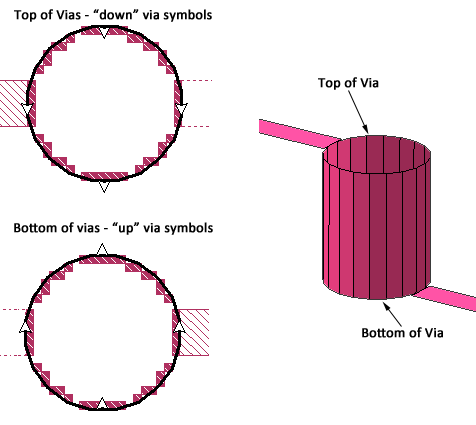There are two types of vias: via polygons and edge vias. Via polygons provide the most flexibility and are most commonly used by the majority of designers. Via polygons are also the type of via created when you import a circuit using any of Sonnet's translators. Edge vias provide a quick, convenient way to add a one cell wide via. The rest of this section applies to via polygons. Edge vias are discussed in Edge Vias.
Via polygons can be rectangles, circles or any arbitrary shape and are added to your circuit in much the same way that metal polygons are added to your circuit. You may add rectangular or circular vias or draw an arbitrary polygon by placing each vertex in its desired location.
An example of a via polygon is shown below. The shape drawn by the user appears in black and the subsections used by em are shown with the fill pattern assigned to the via metal. A 3D view of the via is shown on the right. The via is modeled using the Ring meshing fill so that the middle of the via is hollow. (Note that for clarity, these vias are shown with Via Pads turned off.) For more information on via meshing fill, see Meshing Fill for Vias. The “up” via symbol indicates that the via connects this level to the next level above. The vias on the upper level are shown with a “down” via symbol which is a “down” triangle. Via symbols were automatically created on the destination level when the via was added to the source level.
